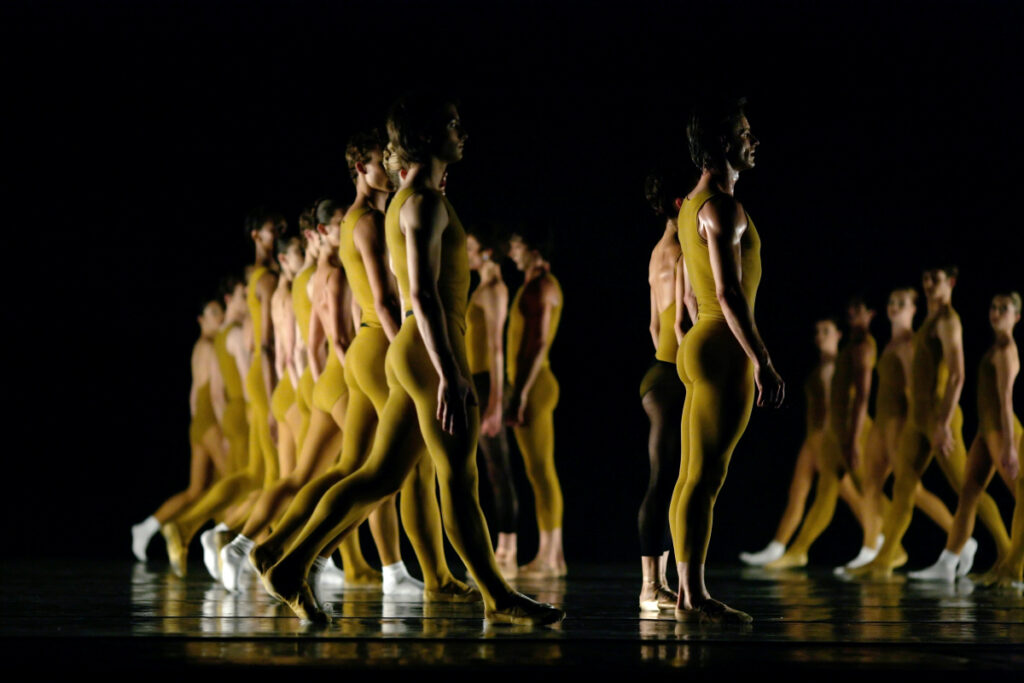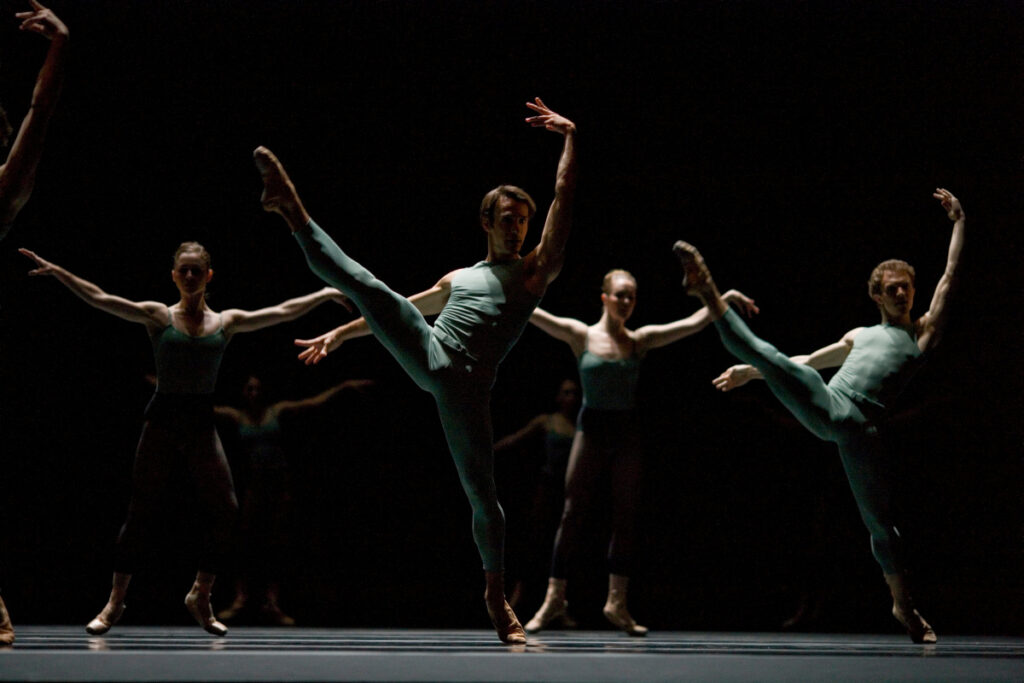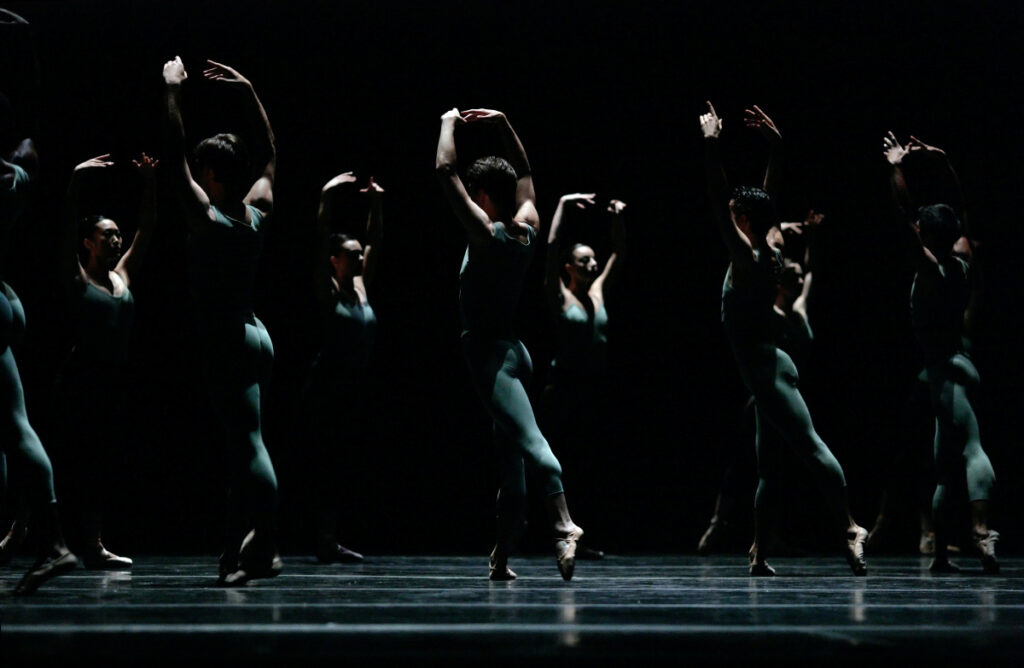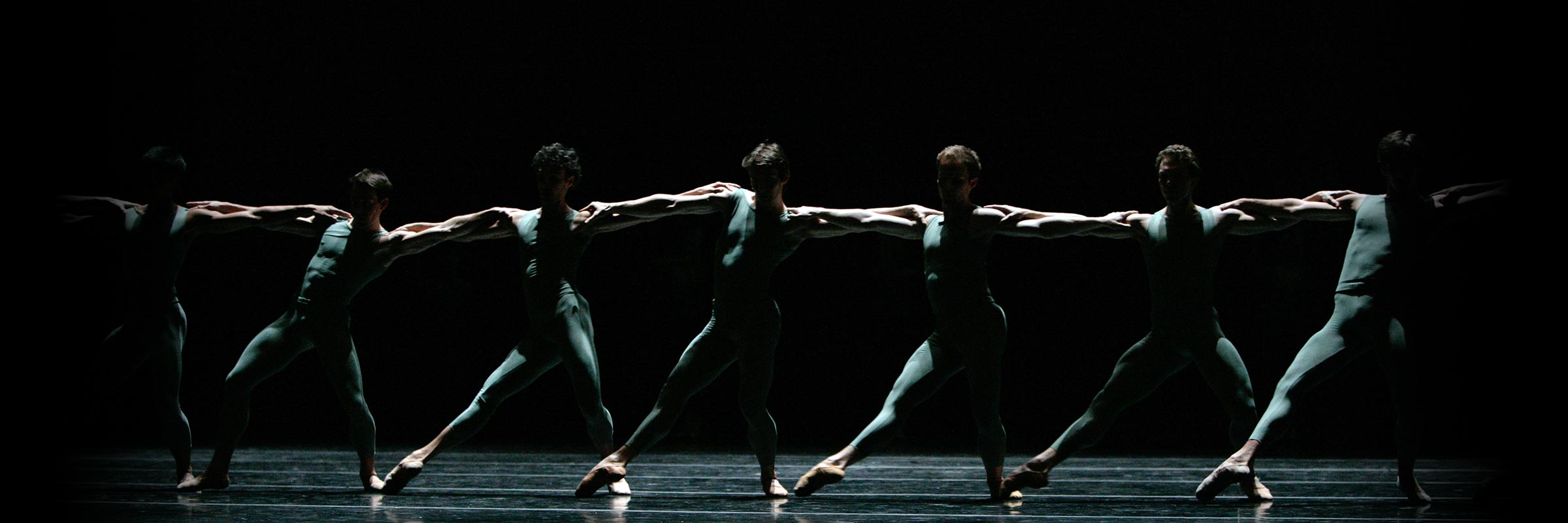About Forsythe’s Artifact Suite
Rethink the Meaning of the Power of Dance
“The fantastic thing about working with [William Forsythe] is that it’s often about whoever is in the room. He responds immediately to the creativity of the people in front of him.”
—Amy Raymond, Stager
William Forsythe’s Artifact Suite, a shorter version of his 1984 evening-length Artifact, preserves all the original ballet’s power and striking innovation. Created for the Scottish Ballet in 2004, Artifact Suite made its U.S. premiere at San Francisco Ballet during the 2006 Repertory Season, startling audiences with its unconventional staging and daring exploration of the boundaries of the classical ballet lexicon.

Forsythe’s imagination seems limitless, to judge by the range in his choreographic repertory. Trained in classical ballet, he made his first foray into dancemaking at Stuttgart in 1976. After freelancing in Europe and spending 21 years as artistic director of Ballett Frankfurt, the choreographer now creates works for his own Forsythe Company (founded in 2005) and dance companies around the world. His works and performances by his companies have been acknowledged with four of New York’s Bessie Awards and three of London’s Laurence Olivier Awards. In 1999, France bestowed the title of Commandeur des Arts et Lettres on Forsythe; other honors include the German Distinguished Service Cross and the Wexner Prize.
Forsythe approaches the creation of a ballet as an evolutionary process, often revising his works for different companies or dancers. “Bill changes something according to where he is in his life,” says former Forsythe dancer Amy Raymond, who staged Artifact Suite for San Francisco Ballet in 2006, along with Jodie Gates. “The fantastic thing about working with him is that it’s often about whoever is in the room. He responds immediately to the creativity of the people in front of him.”

“Artifact transcended contemporary dance as we knew it years ago,” says Gates, also a former Forsythe dancer, “because Bill took all his influences from classical ballet, especially Balanchine in terms of musical syncopation. Like any great artist, he gathered from whom and what he worked with. Artifact is a collage of Bill’s influences from master choreographers.”
For Artifact Suite, Forsythe retained two pas de deux and a handful of ensemble dances with evocative names like “Echoes,” “Locomotiv,” “Hypno,” “Nine-Point,” and “Dance of the 1,000 Piqués.” In rehearsals with the corps de ballet women, Raymond asked for brilliant timing, lightening-quick rhythm and direction changes, and more of everything—rotation, extension, sharpness, precise syncopation, and use of the upper body. She drew a parallel between Forsythe’s use of épaulement (placement of the upper body, especially the shoulders) and the Bournonville style. “So much of Bill’s work is about épaulement and musicality,” says Raymond. “What’s important is to bring in that idea of a more contemporary view toward classical pointe work—which is that extreme line, the involvement and coordination of [the upper body], but taken much further than would be considered classical. What Bill does so beautifully is that overextension of something that comes from the classical tradition.”

Gates singles out the negative space between two bodies as a critical element in Forsythe’s choreography, most apparent in Artifact Suite’s pas de deux. “There’s an incredible sense of opposition, of counterbalancing,” she says. “You couldn’t do these duets without your partner because you would fall down. The [dancers] need each other to facilitate what this choreography is; they have to trust their partners.”
Forsythe’s movement style is uniquely and recognizably his, and it pushes the dancers to work beyond their perceived limits. The duets punctuate the larger ensemble segments like a counterpoint, but it’s with the corps de ballet sequences that Artifact Suite reaches out across the metaphorical footlights and shakes your dance-viewing composure. A lone female figure leads the corps through mesmerizing sequences of semaphoric arm movements while a rogue fire curtain invades the space at seemingly random moments. Later, in “Hypno,” the rhythmic, repetitive sweep of several dozen legs mesmerizes and builds tension.
Dramatic lighting emphasizes the work’s sculptural quality and amps up its already high intensity. But no amount of description does this tour de force justice. Watching Artifact Suite may well take you outside your comfort zone—and if you go there willingly, you will find yourself rethinking the meaning of the power of dance.
by Cheryl A. Ossola
Header Image: San Francisco Ballet in Forsythe’s Artifact Suite // © Erik Tomasson








